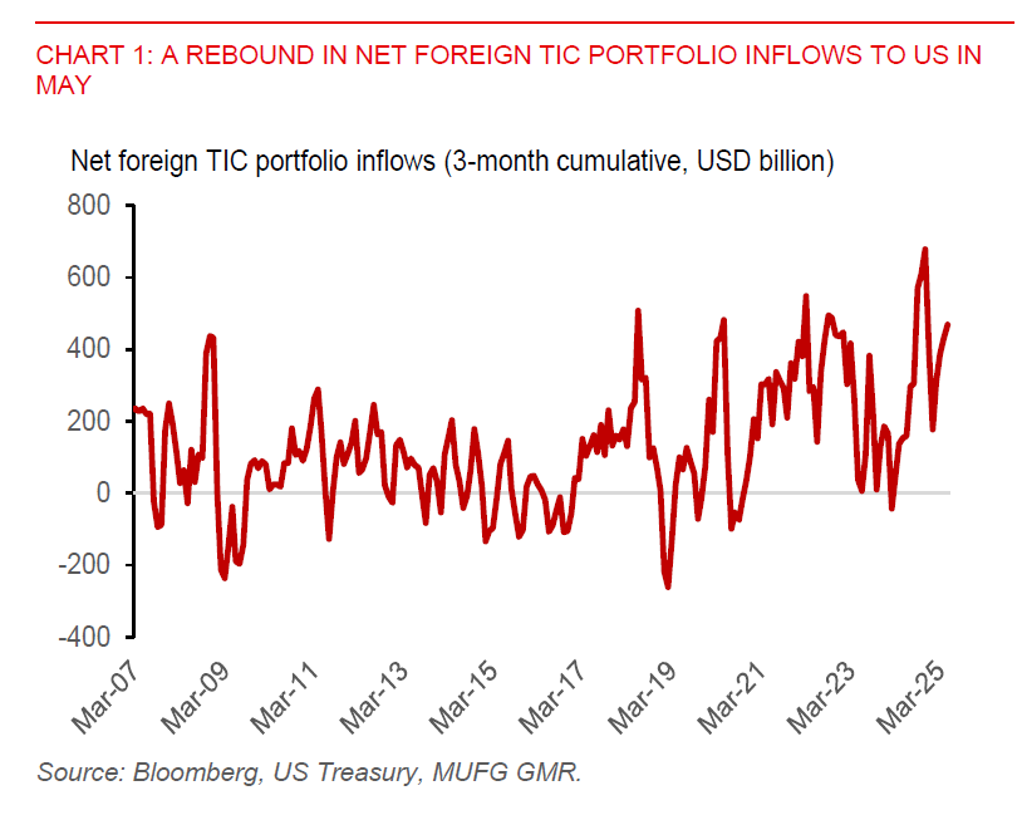Ahead Today
G3: University of Michigan sentiment survey
Asia: Malaysia Q2 GDP and trade, Thailand foreign reserves
Market Highlights
US economic data released yesterday continues to signal resilience, lending support for the DXY USD index, which rose by 0.3%. Retail sales rose by 0.6%mom in June, reversing the 0.9% decline in May and exceeding market expectations of a 0.1% increase. Core retail sales (excluding autos and gas) also climbed 0.6%mom, up from -0.1% in May, and above the consensus forecast of a 0.3% rise. The retail sales control group increased by 0.5%mom, compared to 0.2% in the previous month.
Meanwhile, initial jobless claims fell to 221k for the week ending 12 July, down from 228k the prior week and below market estimates of 233k. Additionally, net foreign TIC portfolio inflows surged to $311.1 billion in May, following $14.2 billion in net outflows in April, when President Trump first announced reciprocal tariff rates on trading partners.
Despite the stronger-than-expected macro data, the US 2-year yield has only ticked higher by 1bps yesterday. In terms of Fed speak, policymakers’ views on monetary policy remain divided. Fed’s Daly said the Fed should not wait too long to cut rates, Fed’s Waller advocates a July rate cut, while Kugler said it is appropriate to keep rates unchanged for some time. Meanwhile, Fed’s Bostic said the economic outlook remains highly uncertain, tariff adjustment could take months, and so rate cuts might be difficult in the short run.

Regional FX
Asian currencies have come under pressure amid an incipient rebound in the US dollar, driven by renewed market focus on tariffs. Yield differentials also remain in favour of the USD, which could weigh on regional currencies. Asian central banks have been lowering policy rates to support growth in response to higher US tariff rates. And while markets still hold net short positions on the US dollar, some unwinding of those trades could lend support for the recent US dollar rebound.
Meanwhile, the Thai baht has shown notable resilience despite USD strength, rising tariff risks, and renewed political uncertainty. Markets appear reluctant to price in a political risk premium for now. Suspended Prime Minister Paetongtarn has sought an extension to respond to the court over alleged ethical violations in a leaked call with former Cambodian Prime Minister Hun Sen. On trade, Thailand has proposed removing tariffs on 90% of US goods to avoid a 36% reciprocal tariff and potentially lowering the tariff rate to a range of 18%-20%. If implemented, this proposed move could reduce Thailand’s trade surplus with the US by 70% over the next three years.
